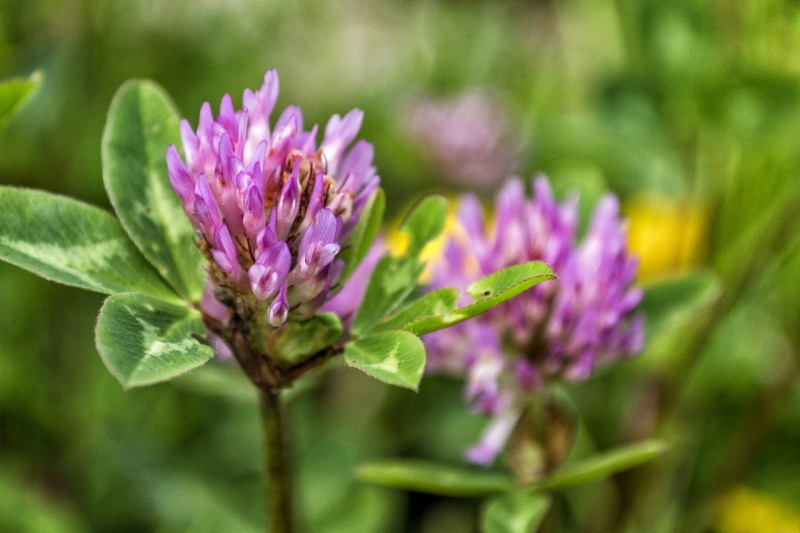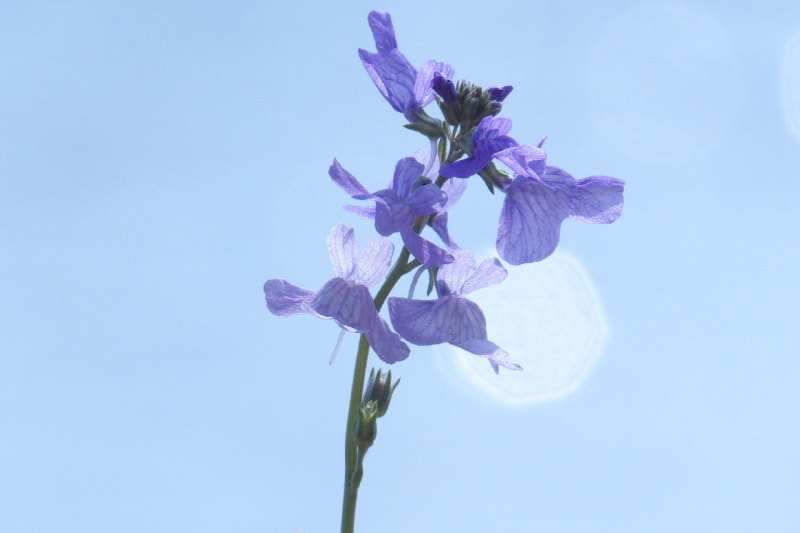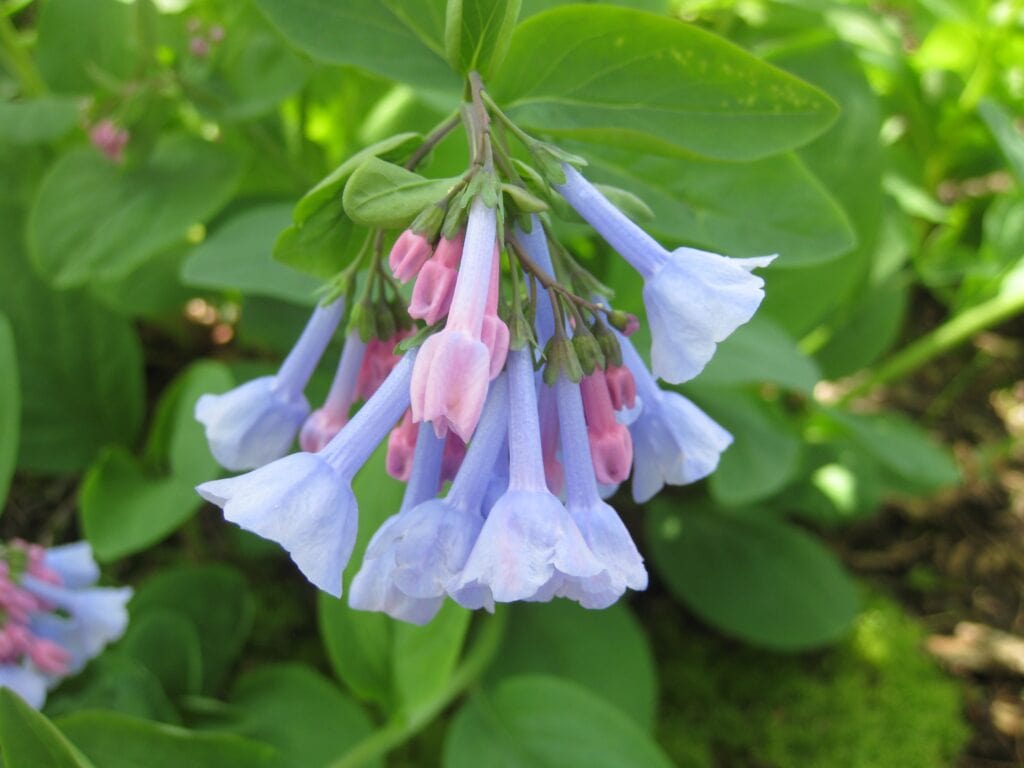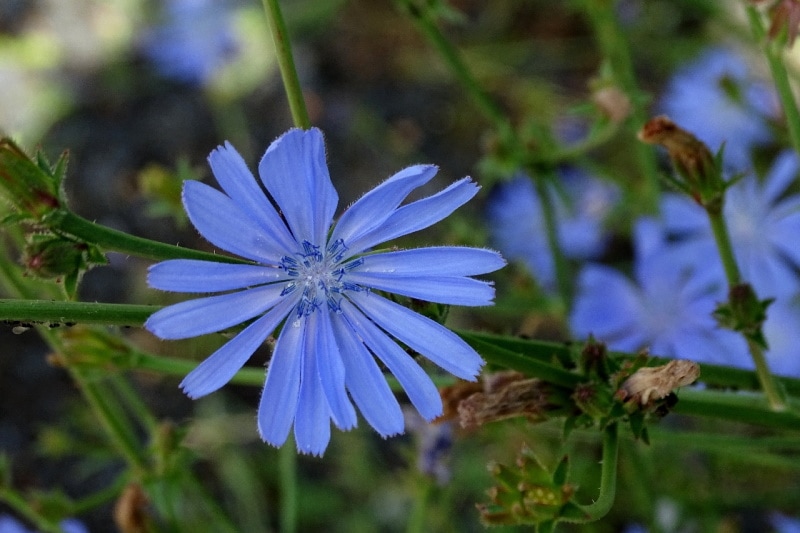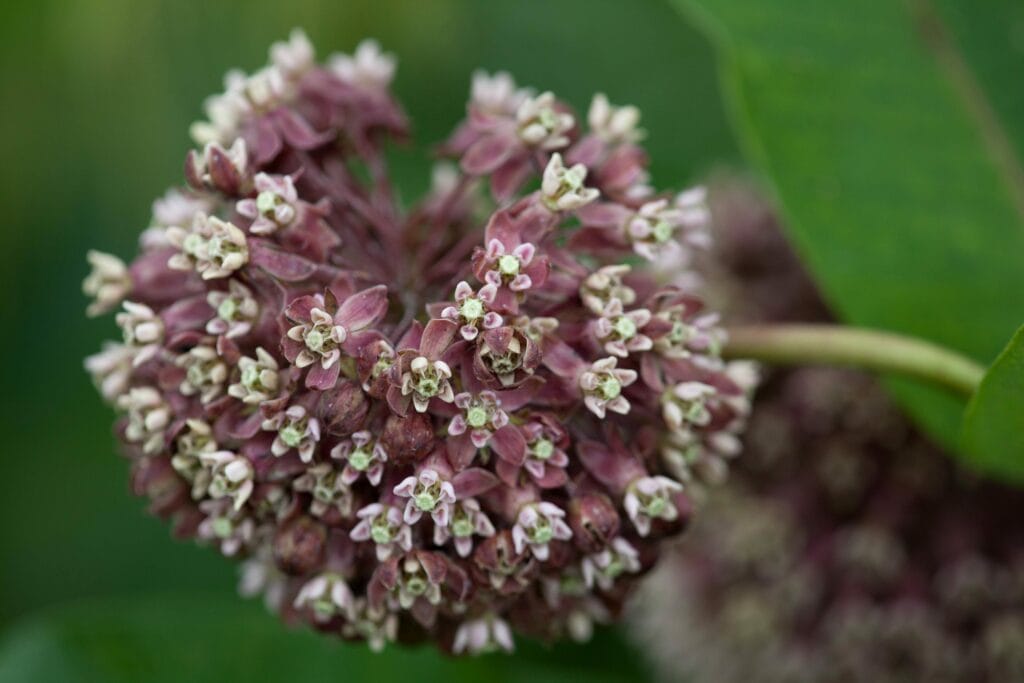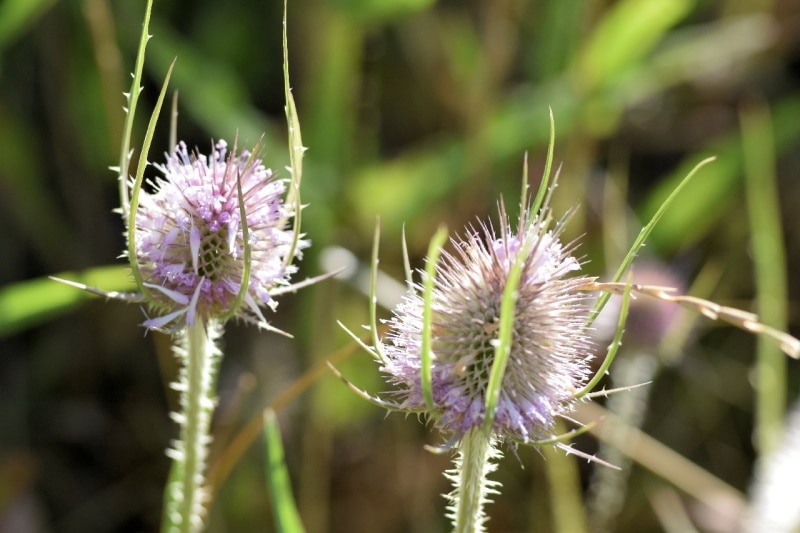50 Wildflowers That Grow in Montana (Identification Guide With Pictures)
-
Pete Ortiz
- Last updated:
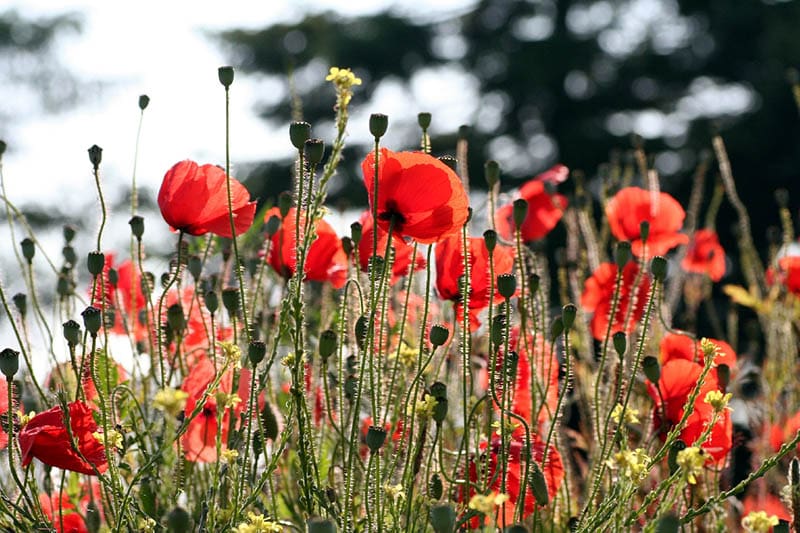
Identifying wildflowers can be really challenging. Not only do a lot of species look similar, but every species has different variants, and some have hybridized which can make it very difficult to differentiate between two or even three different species. The difficulty is further heightened by the incredible number and range of wildflowers that grow in Montana.
To help with your flower identification efforts, below you will find 50 wildflowers that grow in Montana, sorted by the color that they are typically found, but there may be different color variants to consider, too.
The 50 Wildflowers That Grow in Montana
White Wildflowers
1. Anemone
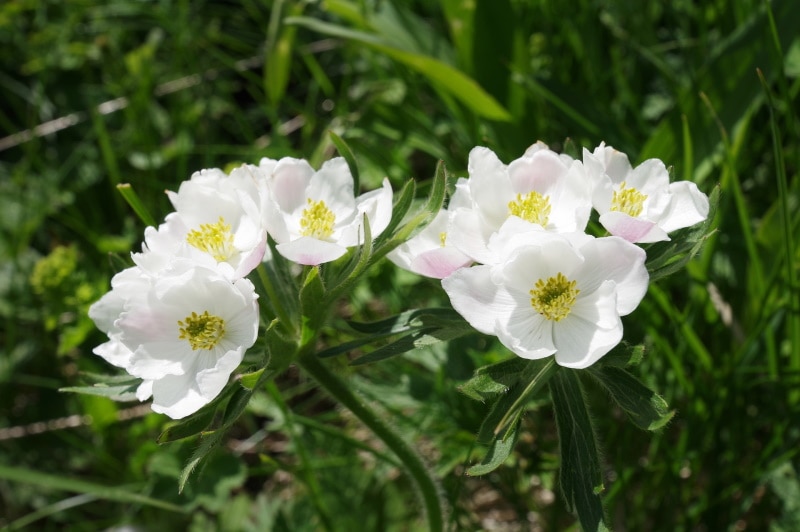
| Latin name: | Anemone parviflora |
The northern anemone is a small-flowered white wildflower that is native to Montana and usually found near water alongside streams or in meadows. They have five petals that are white with a blue or rose tinge to them.
2. Arctic Gentian
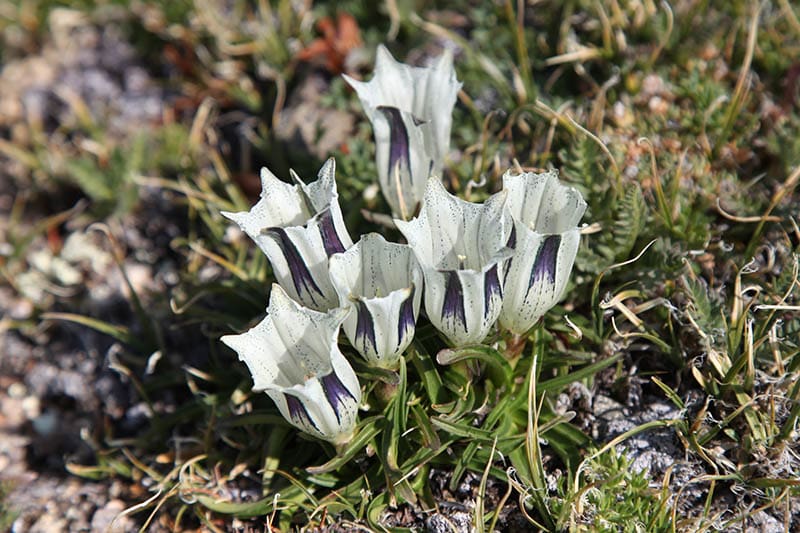
| Latin name: | Gentiana algida |
Arctic gentians grow in moist areas in the alpine zone of Montana. They like moist soil that enjoys good drainage. The white petals tend to have purple blotches on the back.
3. Beargrass
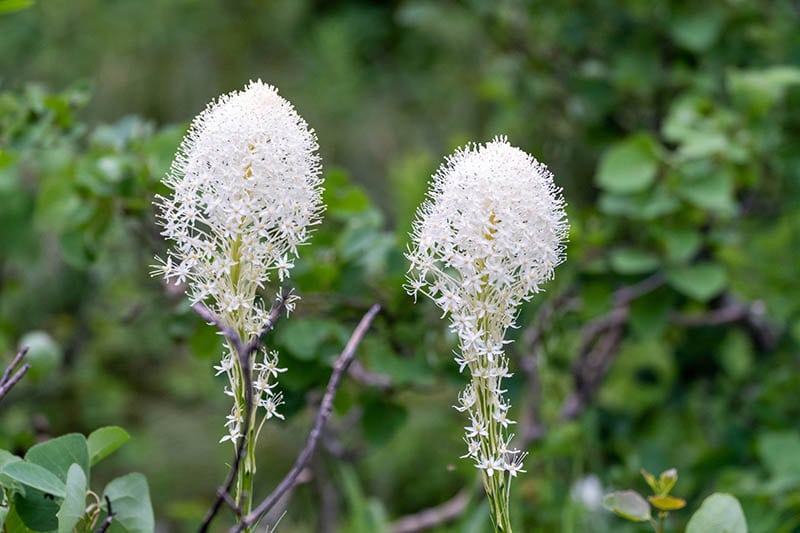
| Latin name: | Xerophyllum tenax |
Beargrass can grow to heights of 5 feet tall, and this Montana native has small white flowers at the top of the stem. The plant is called beargrass because, although the bears do not eat the plants, they do use its foliage to make their dens.
4. Columbine
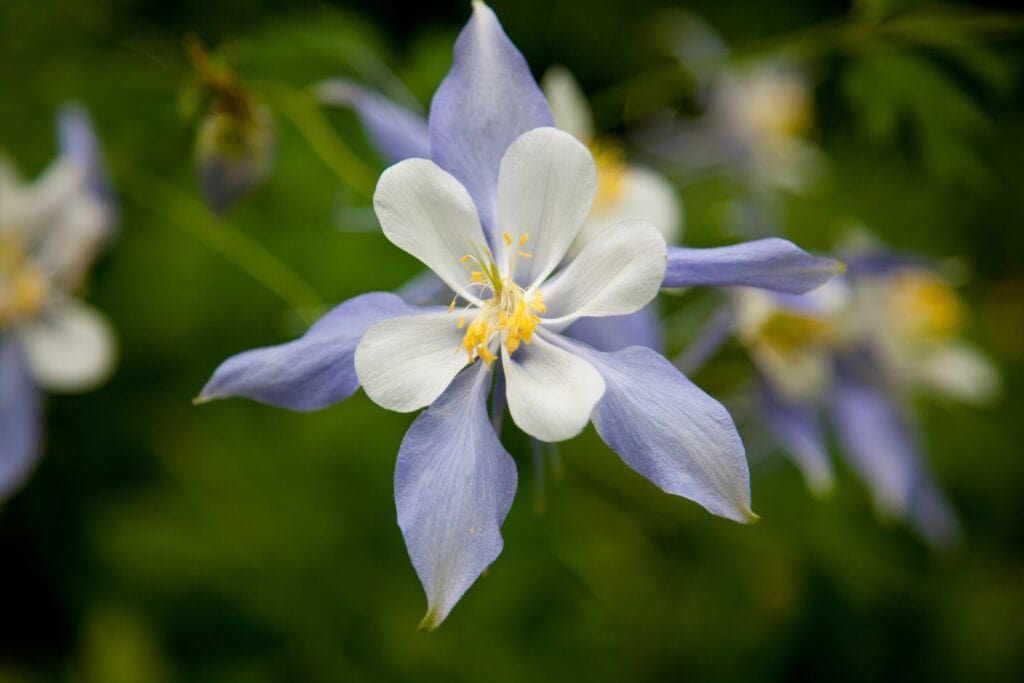
| Latin name: | Aquilegia flavescens |
Columbine grows to a height of around 25 inches and has five sepals around the tubular head. Although the flowers are primarily a white color, they can have a yellow or light blue tinge to them. Columbine, which is considered a medicinal flower, is most often found in meadows and woods but might also be located on alpine slopes.
5. Globe Flower
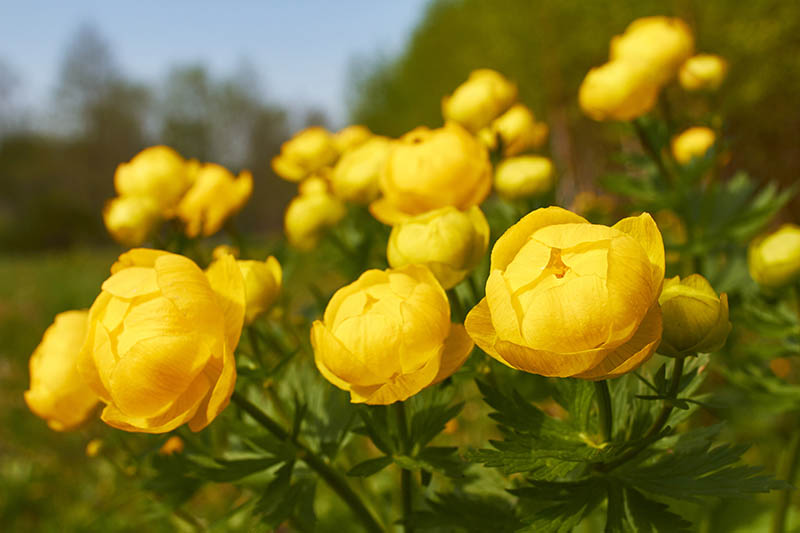
| Latin name: | Trollius laxus |
The American Globeflower is a member of the buttercup family. It can grow to 40cm tall but is usually shorter than this. It has no petals but around half a dozen sepals, and the flowers are found on wet slopes and in alpine meadows.
6. Marigold
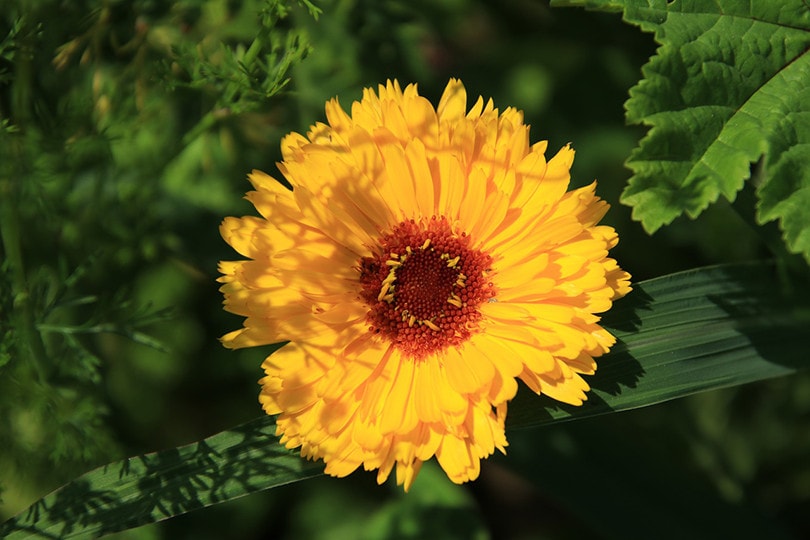
| Latin name: | Caltha leptosepala |
Marigolds typically grow to around 10cm but can, in the right conditions, grow as tall as 15 cm. They have a single stem and the heads have no petals but between 5 and 15 impressive sepals. Marigolds are found in subalpine and alpine locations. The marigold is an edible plant, although care must be taken to ensure that any potential toxins are cooked out, and it is used medicinally for its antispasmodic effects.
7. Phlox
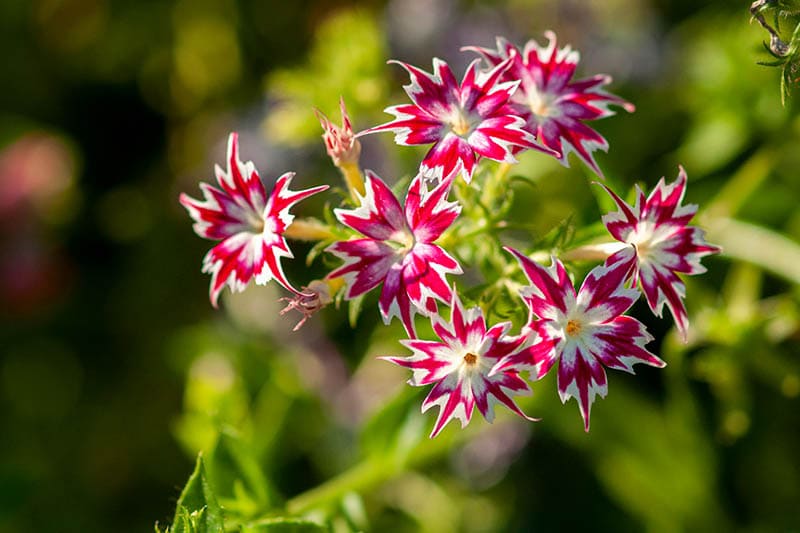
| Latin name: | Phlox albomarginata |
The phlox is a short flower, growing only to around 2 inches in height. It has five lobes that form the flower head, and these can be white but may also be pinkish or purplish in hue. Typically found in rocky areas.
8. Rein Orchid
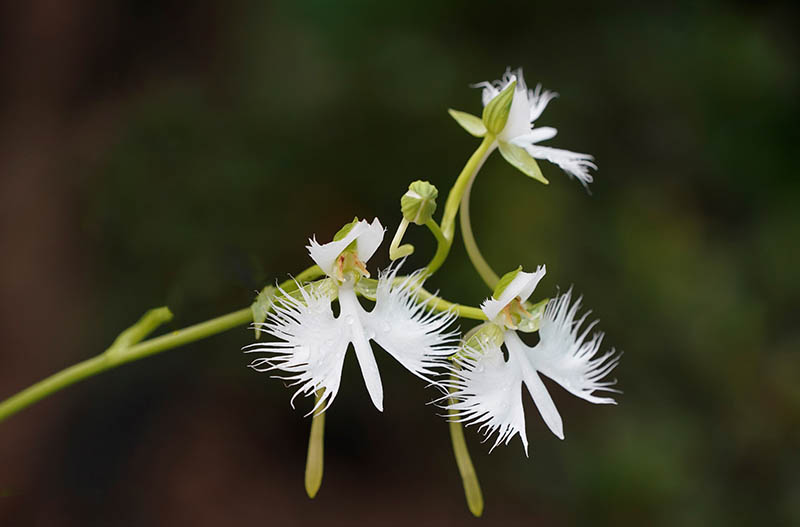
| Latin name: | Platanthera dilatate |
The white rein orchid grows to between 5 and 40 inches tall and features a series of tubular flowers up the top half of the stem. Although the roots of the plant are edible, when cooked, and are used medicinally, the leaves are toxic and should not be consumed.
9. Sandwort
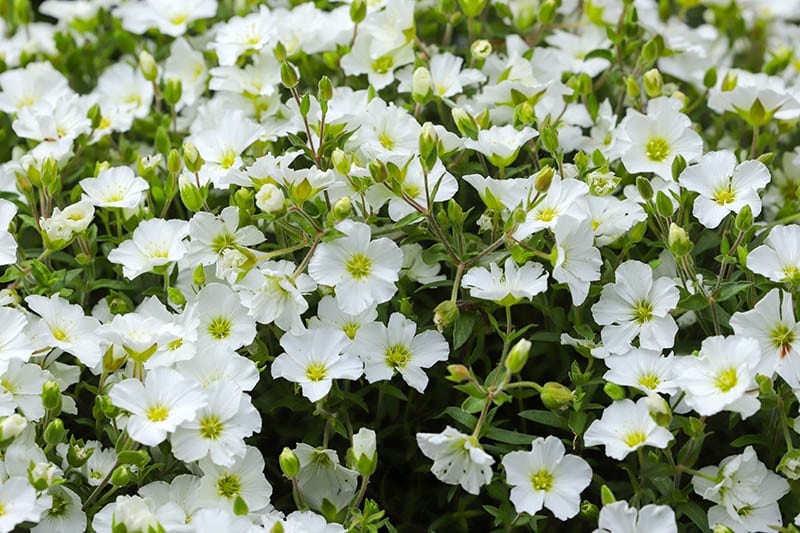
| Latin name: | Minuartia nuttallii |
Growing to a height of around 4 inches, sandwort typically has five petals at the head of the flower, which alternate with green glands that give the flower a somewhat unique appearance. Sandwort is usually found on alpine slopes and hillsides.
10. Snowberry
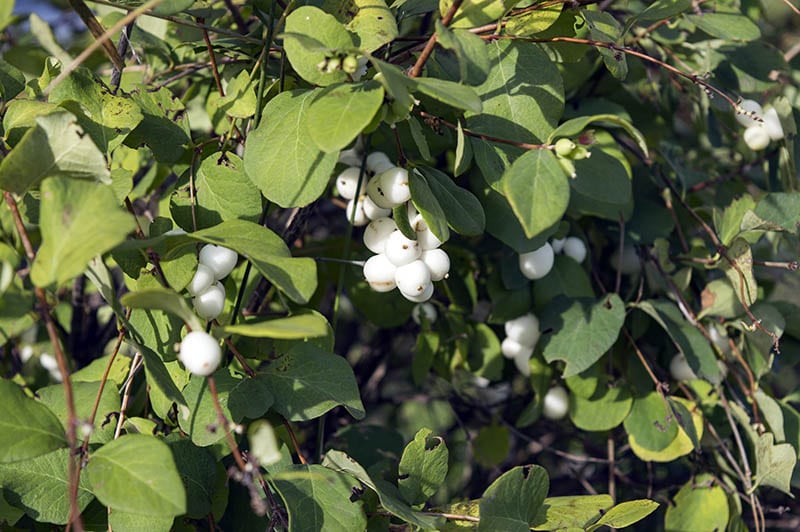
| Latin name: | Symphoricarpos occidentalis |
Snowberry plants can grow as tall as 400 inches and their flowers can be white or a light pink color. Usually found on moist ground, the fruits of the plant are edible cooked or raw but are usually preferred cooked. None of the rest of the plant should be eaten, and the snowberry is typically only eaten as a last resort.
11. Sweetvetch
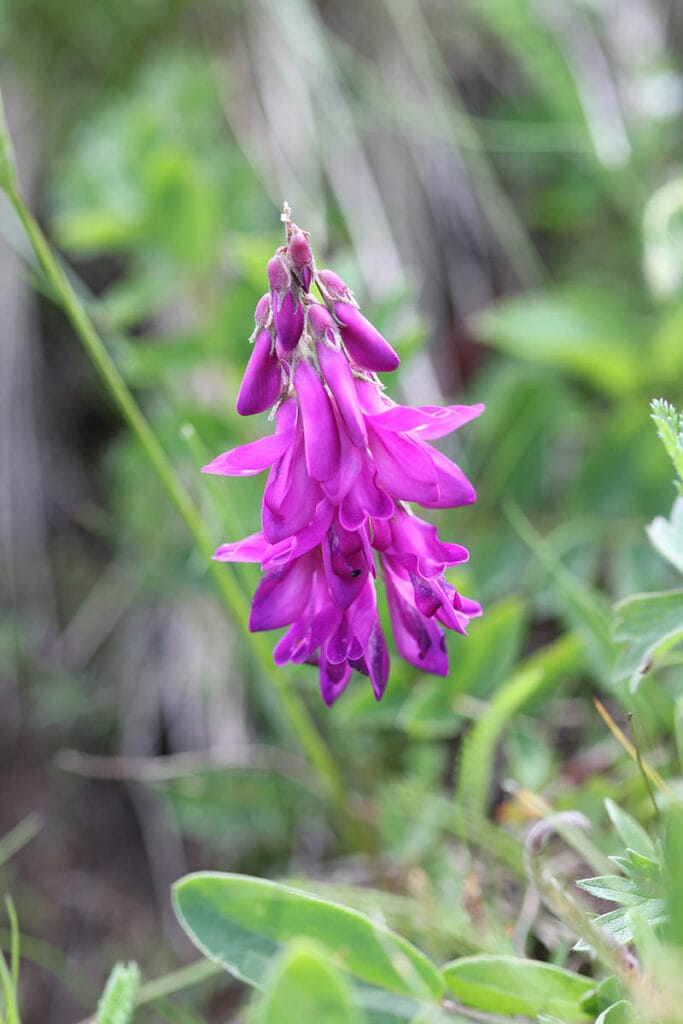
| Latin name: | Hedysarum sulphurescens |
Sweetvetch grows to approximately 25 inches and each plant typically has several stems growing from the base. The plant is more commonly known as yellow sweetvetch because while the flowers can be white, they can also be yellowish in color. The plant is found in forest regions.
12. Trapper’s Tea
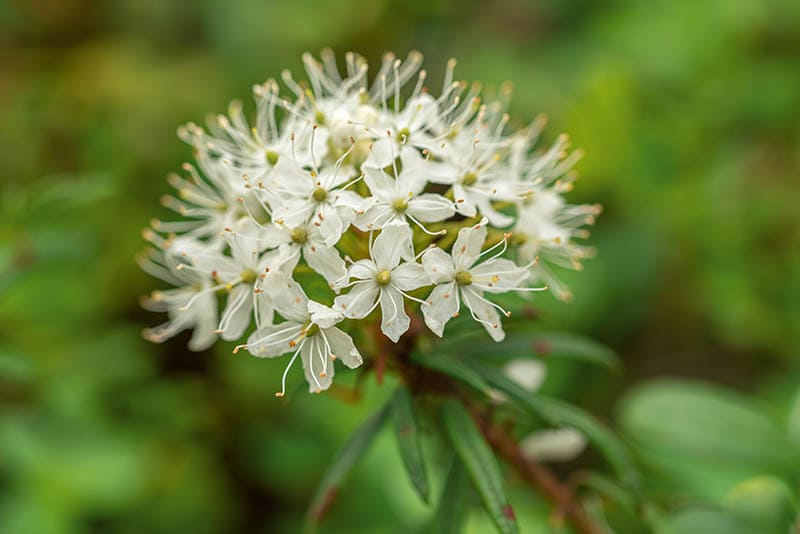
| Latin name: | Ledum glandulosum |
Found in moist and wet areas, trapper’s tea can grow to 30 inches in height and has five petals on each small flower head. The flower gets its name from the fact that the leaves can be turned into tea. For those looking to brew wild tea, it is advised to cold steep the leaves because, when brewed hot, they can give off a narcotic toxin called ledel.
13. Wild Onion

| Latin name: | Allium cernuum |
Also known as nodding onion, wild onion is a member of the allium family that grows to approximately 20 inches tall. Several flowers grow in one umbel, which nods with the weight, and gives the plant its name. Found in moist to dry areas, the wild onion is edible. It has a strong flavor and is most often used as a flavoring rather than eaten alone.
14. Woodland Star
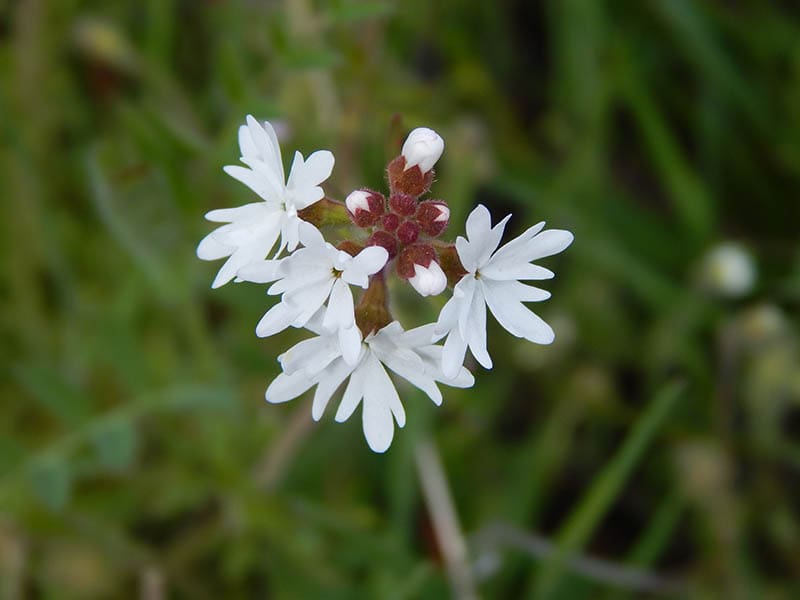
| Latin name: | Lithophragma parviflorum |
Woodland Star can be found on prairies and in forested areas. It grows to 10 inches tall and has a single flower at the head that consists of five petals that are white to a light pinkish color.
Yellow Wildflowers
15. Buttercup
| Latin name: | Ranunculus flammula |
The buttercup is a well-known wildflower that is found in most areas but commonly near water. The flowers actually contain a toxin that causes irritation to the skin, although it has been used medicinally as a cure for ulcers.
16. Evening Star
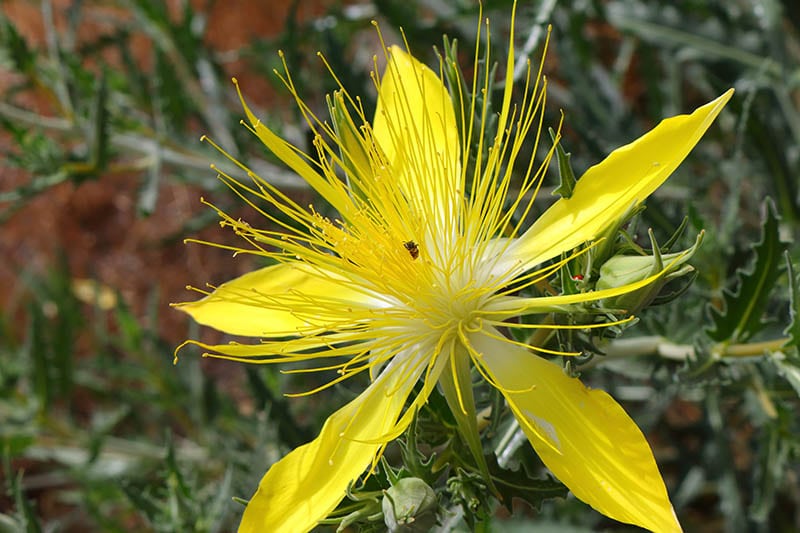
| Latin name: | Mentzelia laevicaulis |
The evening star grows in open fields and reaches heights of up to 40 inches. A single plant can have several stems with each branch end producing one or two flowers. The plant has been used medicinally in the past.
17. Glacier Lily
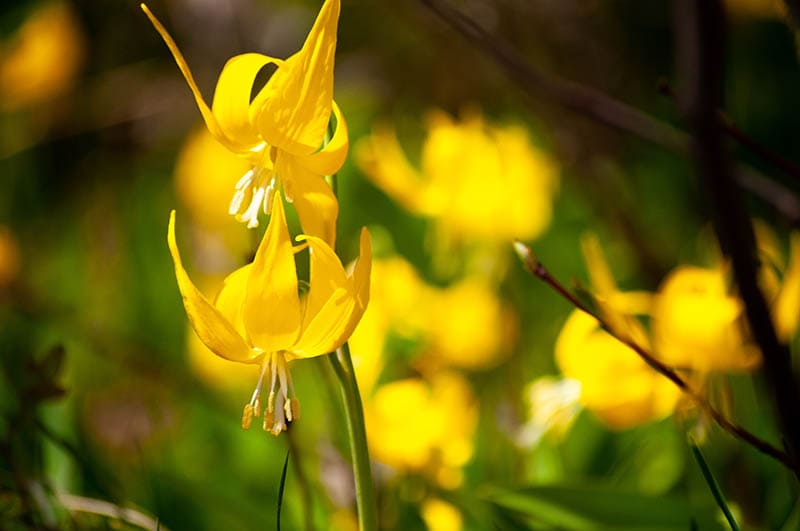
| Latin name: | Erythronium grandiflorum |
The glacier lily grows to 15 inches tall and can often be found growing in patches on moist ground, in the open. The bulb of the glacier lily has edible bulbs. While the bulbs can be eaten raw, their strong flavor is improved somewhat through cooking. The glacier lily has also been used medicinally.
18. Goldenrod
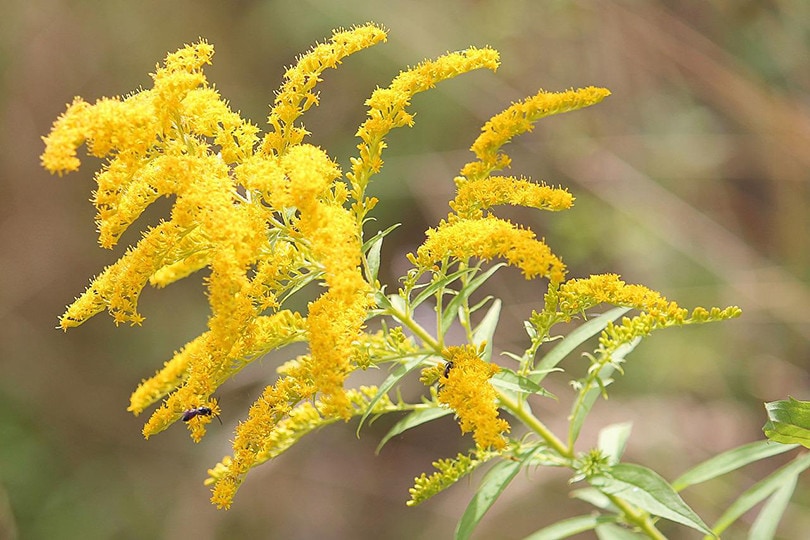
| Latin name: | Solidago |
Goldenrods are wild plants with long stems that contain a large number of tiny yellow flowers. The plant can grow to 60 inches tall and is most often seen in open fields where the plant can enjoy full sunlight. It is very popular with pollinators like bees and butterflies but it can spread voraciously when planted and left in gardens.
19. Loosestrife
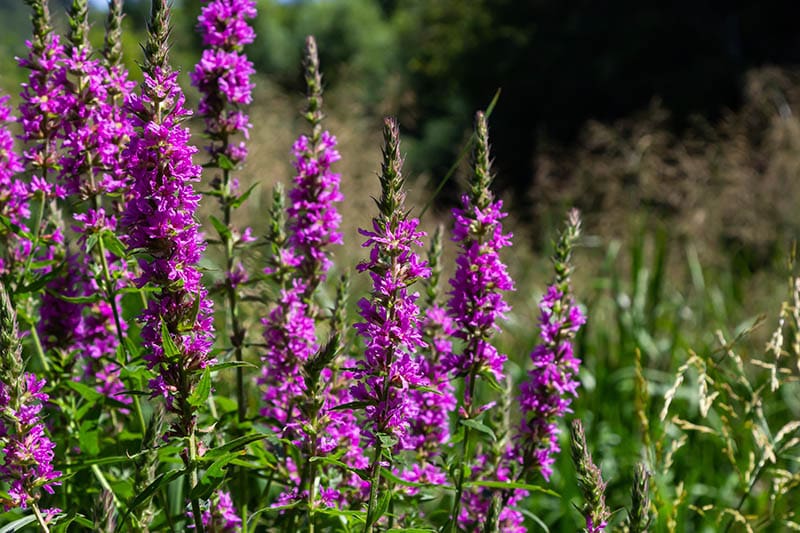
| Latin name: | Lysimachia ciliate |
Growing to 45 inches tall, loosestrife is a yellow-flowered plant with five yellow sepals and a red center. The flowers are most commonly found in wet areas so along rivers or in damp meadows. On the image is its purple variety.
20. Mullein
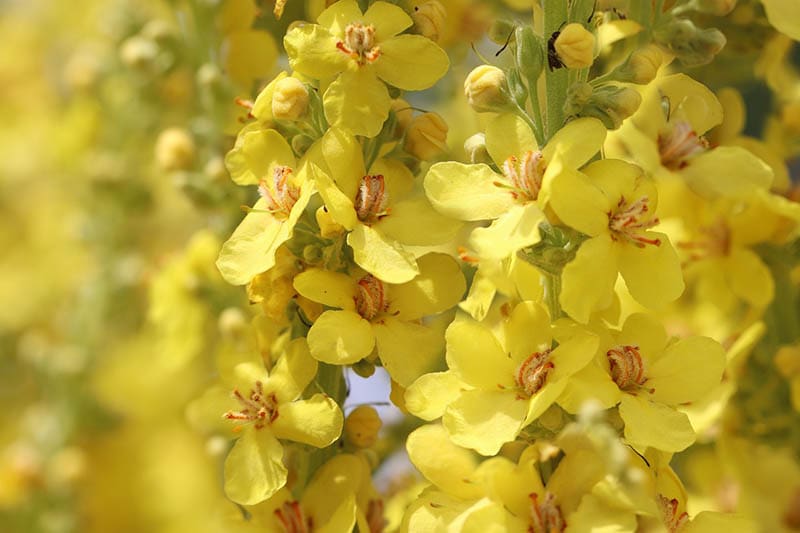
| Latin name: | Verbascum Thapsus |
Mullein can grow to around 30 inches and enjoys full sun exposure so is found in open meadows and fields. The heads and flowers look similar to heads of corn. As well as being used as a medicine throughout history, the various parts of the plant are still found in health stores today.
21. Oregon Grape
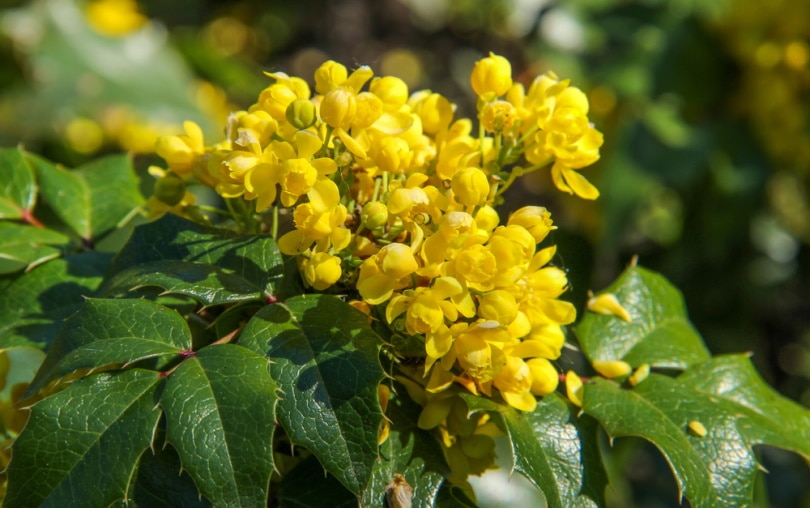
| Latin name: | Mahonia repens |
The Oregon grape is so-called because its flowers look like a bunch of grapes, but are bright yellow in color. The shrublike plant grows to around 30cm and can usually be found in forests. The fruit can be eaten raw or cooked. The seeds can be used to make jam and the root and root bark are used for their pain-killing properties.
22. Owl Clover
| Latin name: | Orthocarpus luteus |
Owl clover is found in meadows and other open sites. It grows to 15 inches tall and has a flower cluster atop stems covered in leaves. Historically, the plant’s leaves have been used as a red dye and the whole plant has also been used as a yellow dye.
23. Sneezeweed
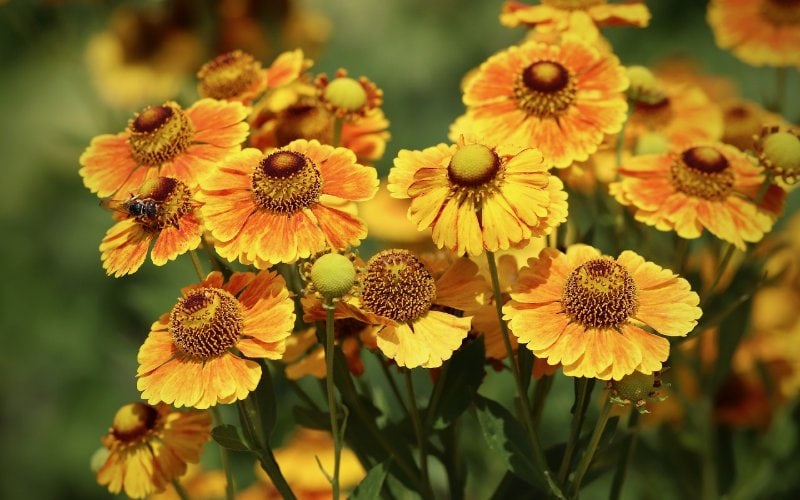
| Latin name: | Helenium autumnale |
Sneezeweed, or the false sunflower, is a striking plant that grows to heights of around 60 inches and has large yellow flowers typically with red centers. Many pollinators are attracted to sneezeweed and this hardy plant is resistant to a lot of different diseases, making it relatively simple to grow in gardens and planters.
24. St. John’s Wort

| Latin name: | Hypericum Scouleri |
St. John’s Wort is a well-known medicinal plant that is found growing in moist locations and to a height of approximately 30 inches. As well as being used for a host of medicinal applications, the plant can also be eaten fresh or prepared, and it can be ground to make flour.
25. Sunflower
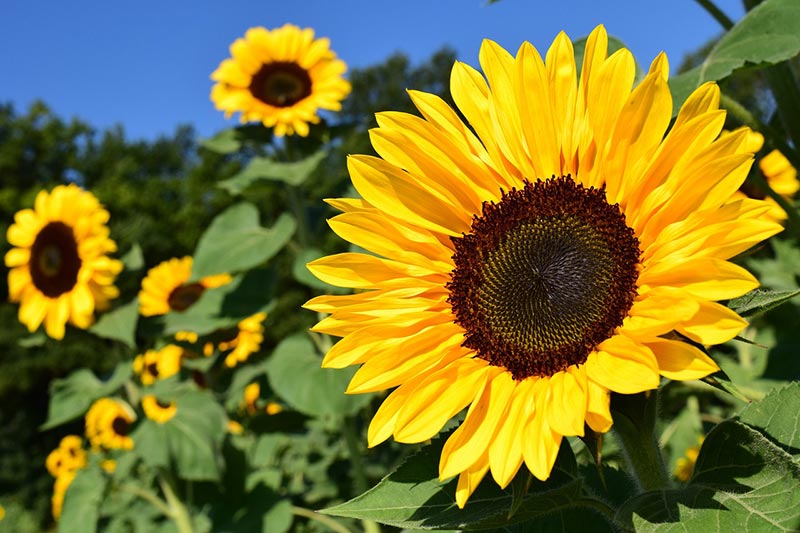
| Latin name: | Helianthus annuus |
Sunflowers grow very tall, up to 80 inches, and they have a large, bright yellow flower with a dark center. They prefer open fields and areas, where they can benefit from full sun, and although they prefer dry soil, they can survive in moist conditions. The flower is popular in gardens but also grows as a weed. It can be eaten raw or cooked and has been used medicinally as a diuretic.
26. Toadflax
| Latin name: | Linaria vulgaris |
Toadflax is another medicinal plant used as a diuretic, and its leaves have a strong laxative effect. The plant grows to 30 inches tall, typically at the roadside or in pastures.
27. Wild Parsnip
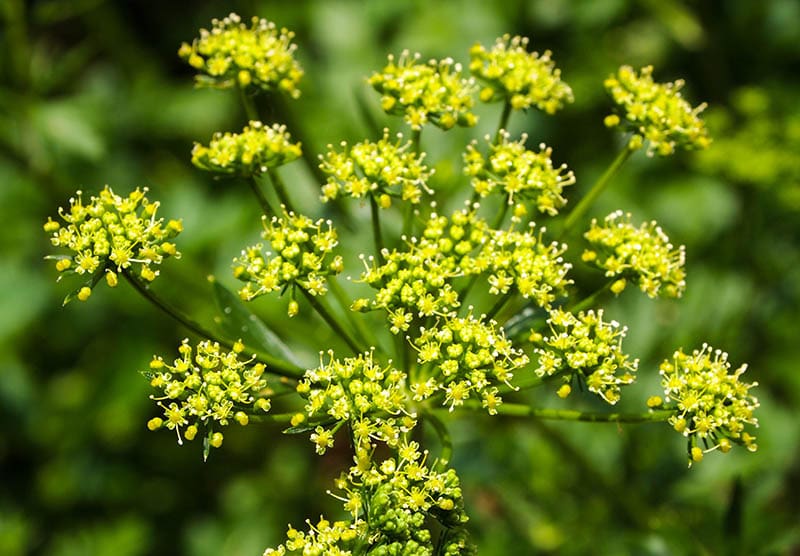
| Latin name: | Pastinaca Sativa |
Wild parsnip is related to the root vegetable parsnip, but wild parsnip is not considered edible. In fact, the leaves and stems can cause serious burns. It is an invasive species that not only kills local plants but can also poison wildlife that eats it. The plant, with its bright yellow feathery blooms, is usually seen in ditches and abandoned fields.
Blue Wildflowers
28. Alfalfa

| Latin name: | Medicago sativa |
Alfalfa is not native to the U.S. but was introduced from Europe and is now found throughout most of the U.S. and Canada. It grows to approximately 40 inches tall and is usually found on cultivated land. The leaves are edible fresh or cooked, and so too are young shoots. Large quantities can be dangerous for some, however. The leaves can help promote weight gain.
29. Bluebells
| Latin name: | Mertensia ciliata |
Bluebells have blue, bell-shaped flower heads that droop and come in small clusters. The plant can grow up to 60 inches tall although is usually much shorter than this, and it is usually found in wet areas including next to rivers and streams. The leaves and flowers are edible and bluebells have historically been used for their medicinal properties.
30. Blue-Eyed Grass
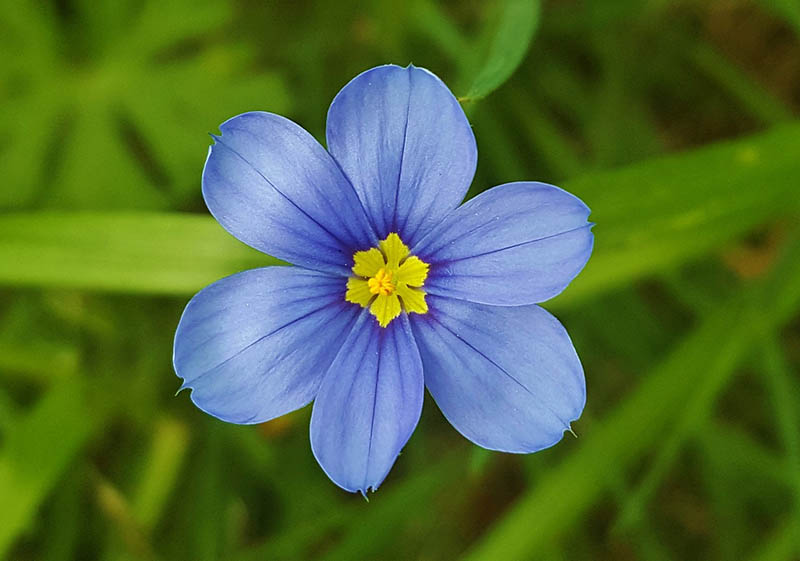
| Latin name: | Sisyrinchium montanum |
Blue-eyed grass is a grass with a tall, thin stem, typically with a single flower protruding from the stem. Each flower has 6 tepals and blue-eyed grass can be found in moist areas of marshland. The leaves can be eaten cooked and the roots have been used as tea to treat diarrhea.
31. Chicory
| Latin name: | Cichorium intybus |
Chicory is a non-native plant but is found throughout the state. It has delicate blue flowers that are usually seen in patches, and it grows at the roadside or in fields where it enjoys dry, sunny conditions. The leaves can be eaten and are high in vitamins and minerals, while the roots are sometimes boiled and used as a coffee replacement.
32. Cornflower
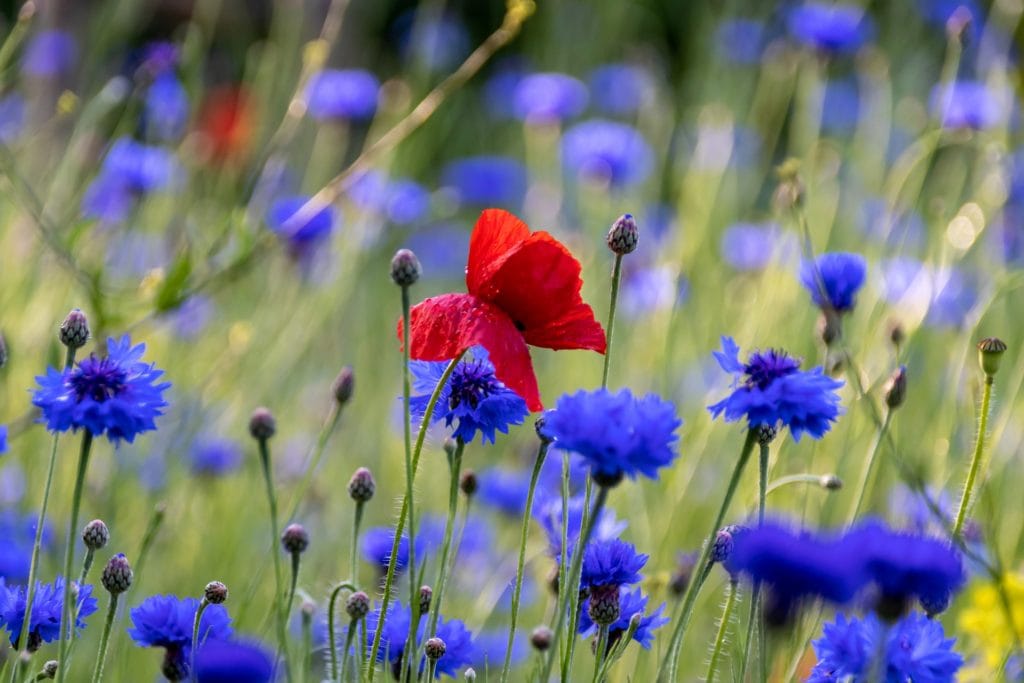
| Latin name: | Centaurea cyanus |
Cornflower, or bachelor’s button, is a daisy-like flower that is highly resistant to pests and disease. They also grow well in drought conditions and are said to be deer-resistant. The cornflower is especially attractive to butterflies and the flowers are popular for drying and showing.
33. Forget Me Not

| Latin name: | Myosotis asiatica |
Forget-me-nots have a single stem with several heads, each displaying one or more dainty blue flowers. The plants can grow to 15 inches tall, but may also grow as short as 2 inches and they are usually found in moist areas and on open slopes. The flower has been used medicinally and is still used as an ointment to treat certain eye conditions.
34. Iris
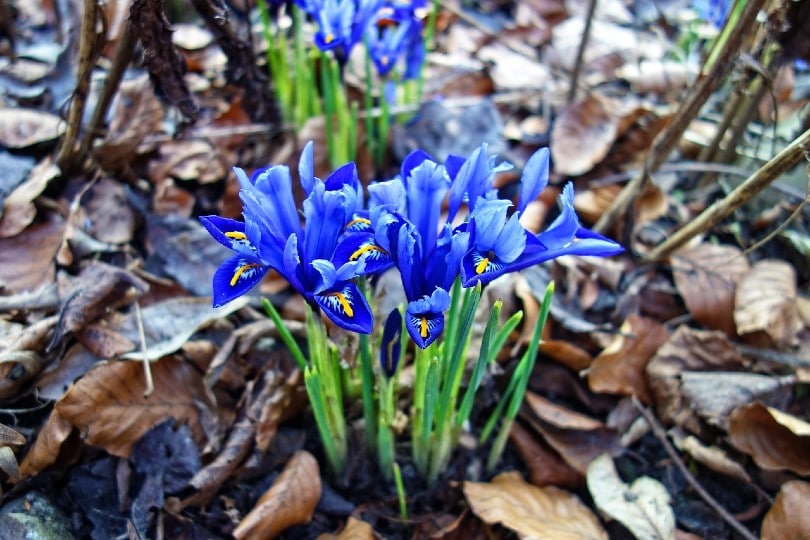
| Latin name: | Iris missouriensis |
The iris can be found in meadows and near streams as it relies on moist conditions to flower. The flowers are considered showy. There are usually two flowers on each stalk and each has three sepals that curve backward and have a yellow center with blue outer. The seeds of some irises are used as a coffee substitute and it has been used as a topical treatment.
35. Jacob’s Ladder
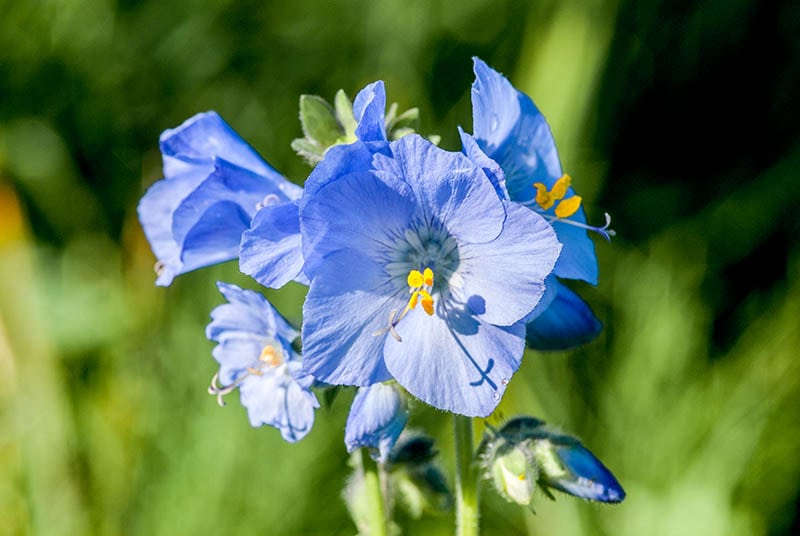
| Latin name: | Polemonium viscosum |
Found in open places, Jacob’s ladder grows relatively short, up to 8 inches in height, but its heads are collections of lots of small, vibrant blue flowers that make them stand out in the green grass of the mountainsides where they are found.
36. Kittentails
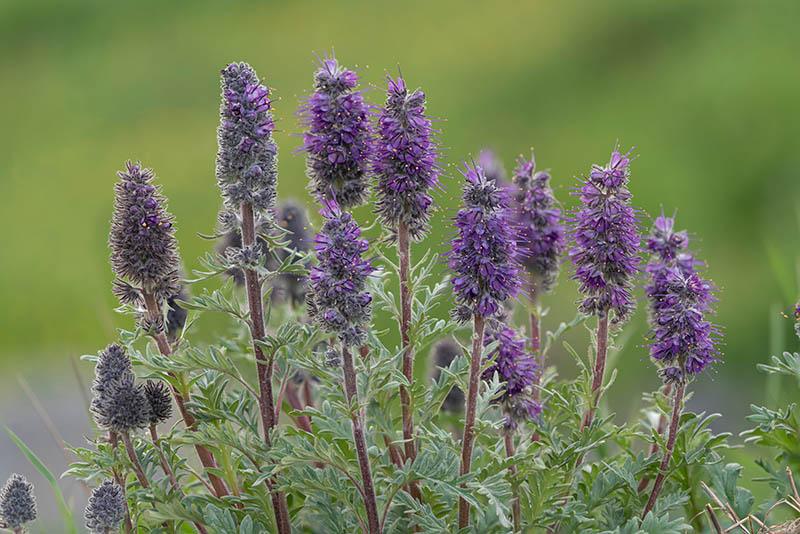
| Latin name: | Besseya wyomingensis |
Kittentails are distinctive in appearance with a single stalk and a collection of small flowers that have an almost thistle-like shape. The plants grow to 10 inches tall and are usually located in foothills and on open slopes.
37. Periwinkle
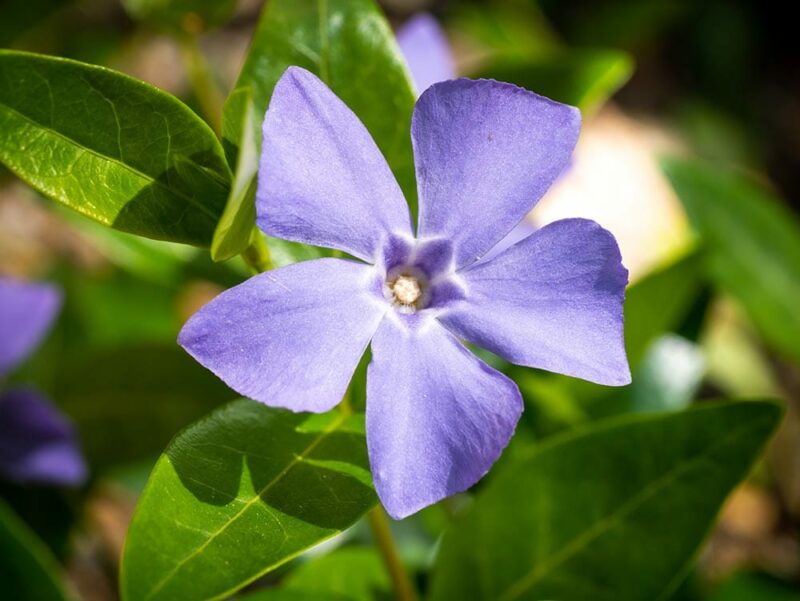
| Latin name: | Vinca minor |
Periwinkles are dainty wildflowers that grow to around 4 inches in height. The flower is commonly used as a ground cover because of its short stature and attractive blue flower heads. It is deer resistant and attracts many pollinators, although the periwinkle is not native to the U.S. and is an introduced species.
38. Violet
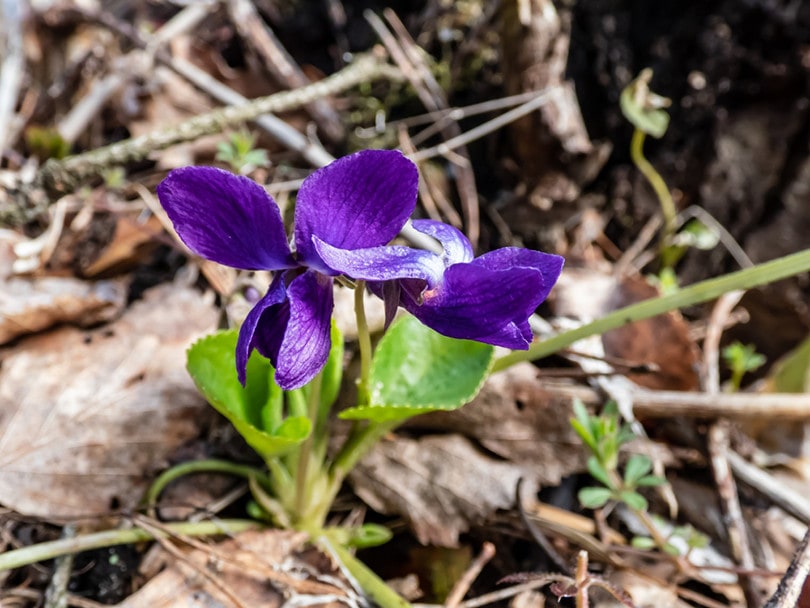
| Latin name: | Viola adunca |
The violet, specifically the early blue violet, is a small clumping wildflower with pretty blue flowers. Commonly found in meadows and open ground, as well as on foothills, the 4-inch tall flower is edible and known to be high in vitamins A and C. It has also been used to treat asthma and stomach problems, especially in children.
Pink Wildflowers
39. Common Milkweed
| Latin name: | Asclepias syriaca |
Common milkweed is one of several milkweed varieties found in Montana. It grows to 35 inches in height and at the top of the plant stalk is a collection of small pink flowers. It attracts several hundred species of insects including many pollinators but it can force out other, local plants, so care needs to be taken if growing it in gardens.
40. Crown Vetch
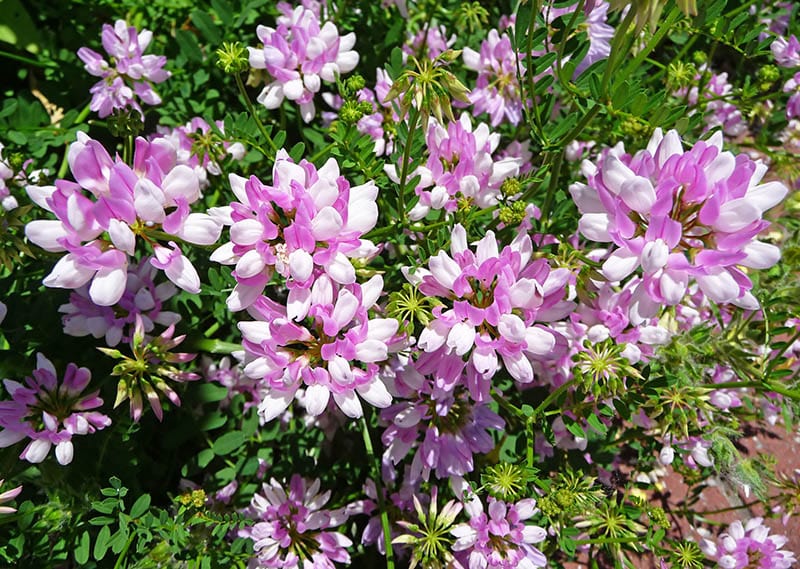
| Latin name: | Securigera varia |
Crown vetch prefers full sun or partial shade and has almost fern-like leaves. The plant is non-native and was introduced to control soil erosion. It is usually found on sandy banks, and it will need careful controlling if being planted in a garden because it will force out less hardy native plants.
41. Dogbane
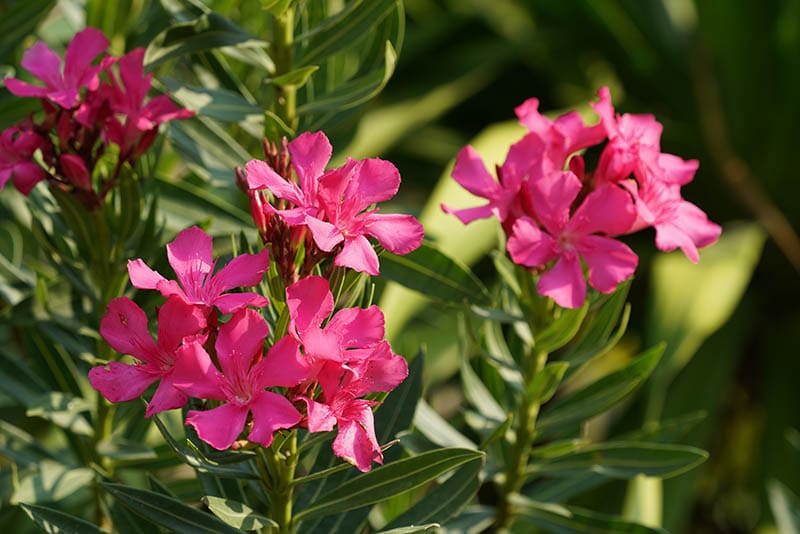
| Latin name: | Apocynum androsaemifolium |
Dogbane, or milkweed as it is also known, has large green leaves and small white to pink flowers. It grows to around 27 inches and is found in dry areas including woods and open fields. It is considered a problematic weed in orchards. Although some people cannot tolerate the plant’s mucous-irritating properties, it has been used medicinally to treat a range of different conditions and ailments.
42. Everlasting Pea
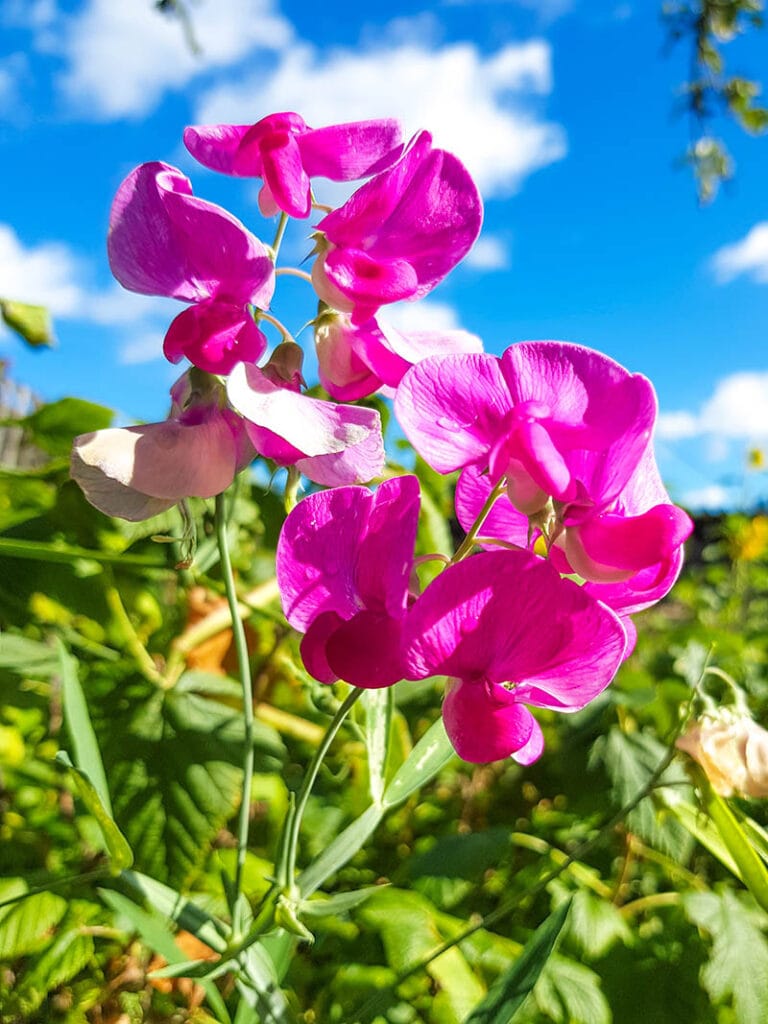
| Latin name: | Lathyrus latifolius |
Although a member of the legume family, the everlasting pea is a sweet pea and although it should not yield negative symptoms if consumed accidentally as a one-off, it can result in paralysis if eaten in quantity and over a period of time. However, everlasting pea does make a good ground cover and the small pink flowers, which fade to white as the plant matures, do look good as a trailing or trellis plant.
43. Fireweed
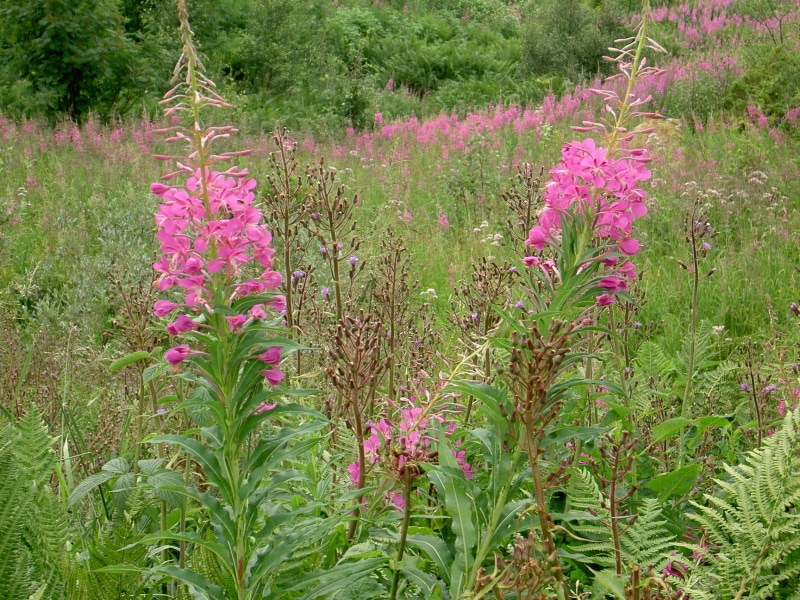
| Latin name: | Chamerion angustifolium |
Fireweed, which is sometimes also known as willow herb, is a very hardy plant that can grow in challenging conditions. It is often one of the first plants to grow in forests that have been decimated by wildfires. It attracts pollinators including hummingbirds and butterflies.
44. Joe Pye Weed
| Latin name: | Eutrochium |
Growing to 35 inches, Joe Pye Weed grows tall and has clusters of pink flowers at the end of its stems. It enjoys partial shade and is native to Montana and this is another wildflower that is especially effective at attracting pollinators.
45. Spreading Dogbane
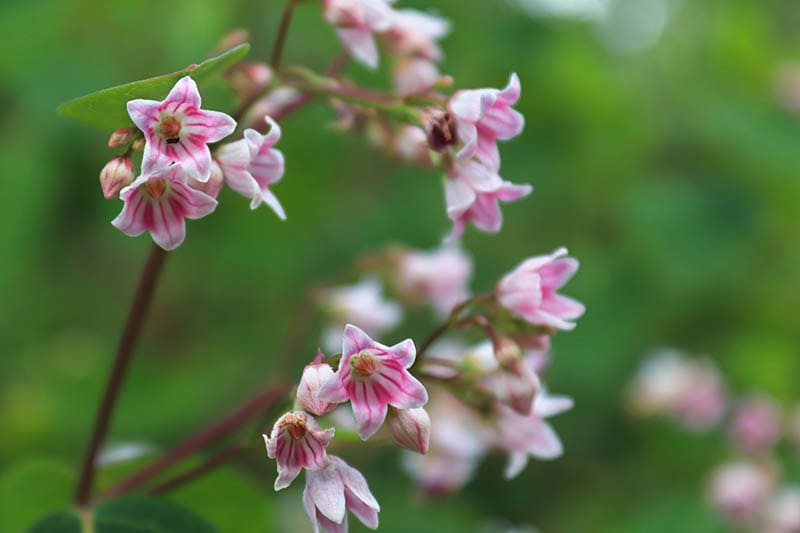
| Latin name: | Apocynum androsaemifolium |
Spreading dogbane grows big and it grows quickly. It gets its name from the fact that the pink-flowered plant is toxic to dogs, as well as humans. This wildflower has a smell that is similar to lilac, and it is usually found on sandy water banks.
46. Swamp Milkweed
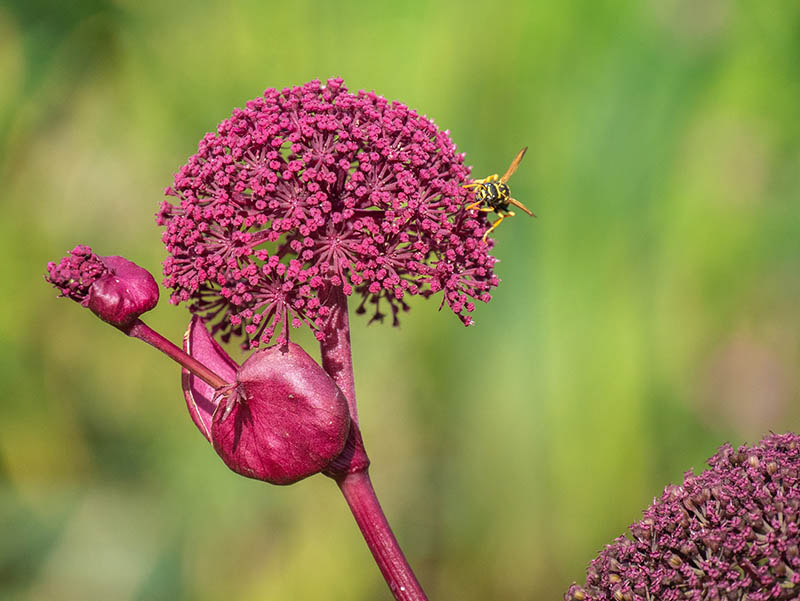
| Latin name: | Asclepias incarnata |
Swamp milkweed, or pink milkweed, is found in wet areas including lakeshores. It has large clusters of pink flowers, and it is popular with pollinators, especially Monarchs as the caterpillars enjoy the leaves of the swamp milkweed.
Purple Wildflowers
47. Bee Balm
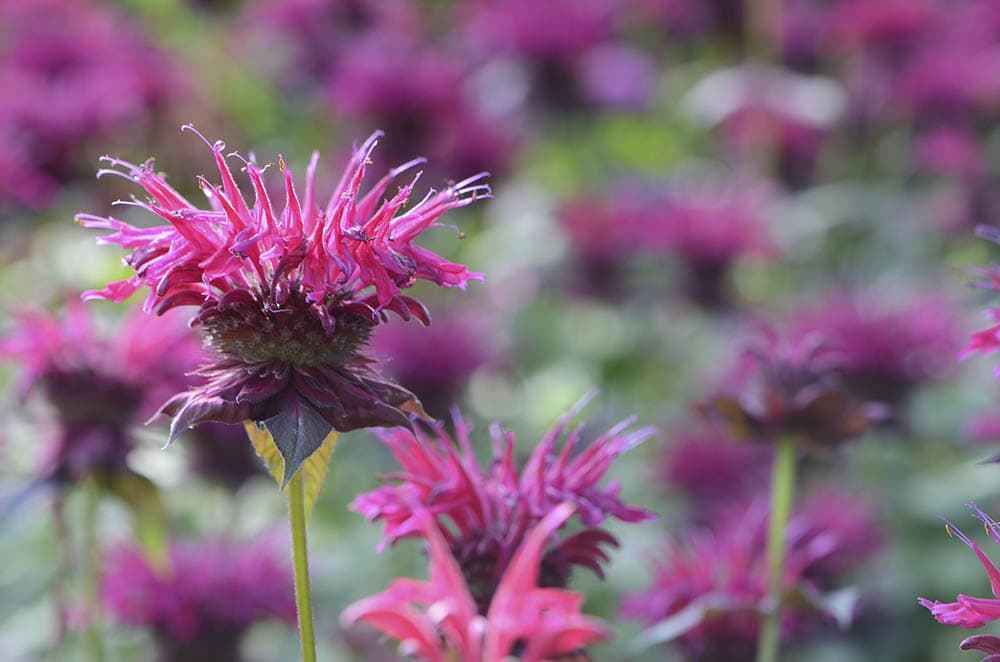
| Latin name: | Monarda fistulosa |
Bee balm is also called horsemint or wild bergamot. It has lilac-colored flowers and attracts pollinators including bees and hummingbirds. It is a native plant, and it is commonly used for its medicinal properties. It is especially known for being an antimicrobial that can help stave off colds and flu.
48. Heather
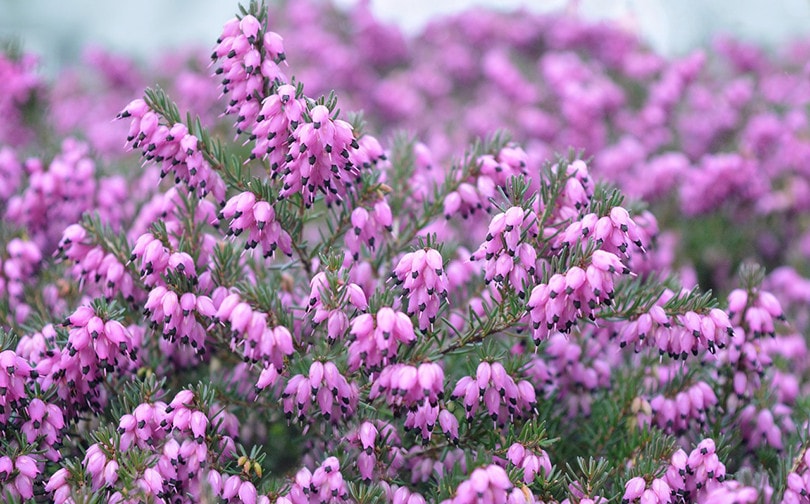
| Latin name: | Phyllodoce empetriformis |
Pink mountain heather grows approximately 15 inches tall and in a shrub-like formation that can be extensive. It grows in moist to wet conditions and has, historically, been used as a treatment for tuberculosis.
49. Teasel
| Latin name: | Dipsacus fullonum |
Teasel plants have prickly stems and their flowers are a purple-blue color. The flowers attract birds like goldfinches and the plant has been used medicinally to help recover from broken bones and damaged tissue. It can be used to help treat Lyme disease.
50. Vervain
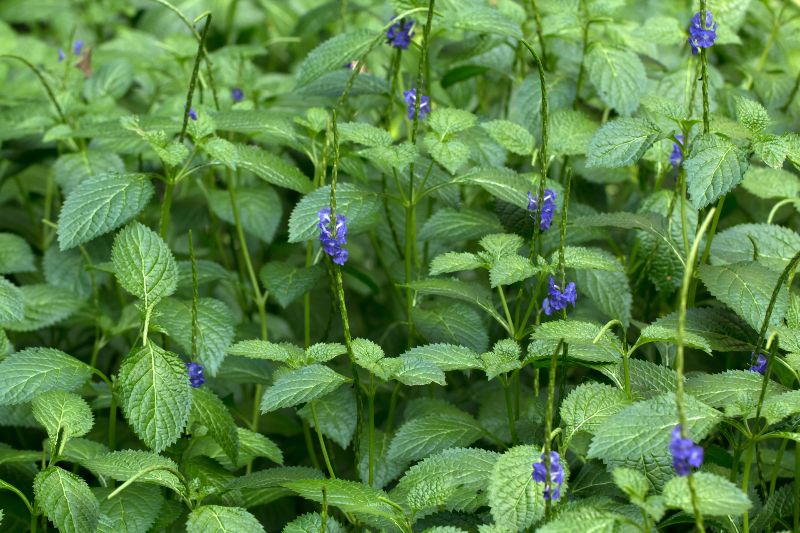
| Latin name: | Verbena bracteate |
Found on roadsides and in disturbed ground, vervain has winged stalks and clusters of purple flowers. It can trail or creep and the plant can grow to heights of around 23 inches.
Conclusion
There are hundreds of species and varieties of wildflowers in Montana, as well as hybrids of many of them. As such, it can be difficult to identify all but some of the most common and distinctive. Above, we have listed 50 common wildflowers, categorized and grouped by color to help make identification easier.
See Also:
- 63 Wildflowers That Grow in Nebraska (Identification Guide with Pictures)
- 16 Wildflowers That Grow in Indiana (Identification Guide with Pictures)
Contents



